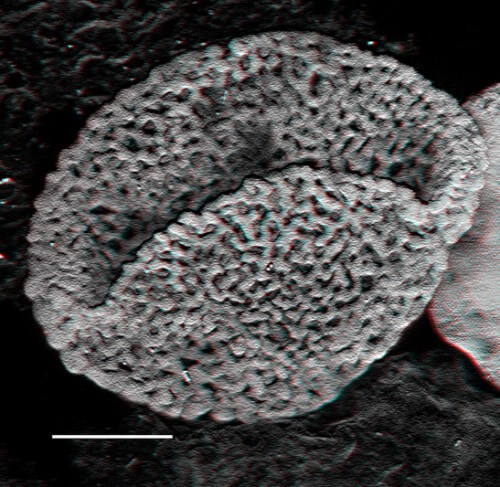This is shown by fossil analysis of pollen grains. Now it is about 240 million years or the beginning of the Triassic era

Soil cores from drilling in Switzerland have revealed the oldest fossils of the direct ancestors of flowering plants. The pollen grains that were discovered were remarkably preserved for 240 million years. According to the researchers, they are evidence that plants evolved 100 million years earlier than previously thought. The research was published in the journal Frontiers in Plant Science.
Flowering plants evolved from extinct conifers, ginkgos, cycads, and seed-producing ferns. The oldest known fossils of flowering plants are of pollen grains. They are small, strong and numerous, so they are more easily snacked on than leaves and flowers.
An unbroken succession of fossilized pollen covers the time period from the Cretaceous period, about 140 million years ago, so it was common to assume that the first plants evolved around that time. But in the current study, a material similar to plant pollen was discovered, which is 100 million years old, which implies that the flowering plants originated in the Early Triassic (252-247 million years before our time) or even earlier.
Many studies have attempted to estimate the age of flowering plants from molecular data, but so far no consensus has been reached. Depending on the different databases and methods, the estimates ranged between the Triassic and the Cretaceous. Molecular estimates usually have to be "anchored" by fossil evidence, but very old fossils were not available. "This is why the current finding of pollen-like fossils from the Triassic is significant," says Prof. Peter Hochuli from the University of Zurich.
Hochuli and Susan Feist-Burkhart of the Paleontological Institute and Museum at the University of Zurich, studied two soil cores from the Muych and Lögren boreholes in northern Switzerland, and found what are suspected to be the earliest known flowering plant grains. Using confocal laser scanning microscopy, they obtained high-resolution XNUMXD images of six different types of pollen.
In a previous study from 2004, the two flowers recorded fossilized pollen from the middle of the Triassic period in cores from the Barents Sea area, south of Spitsbergen. The samples from the current study were found 3000 km south of the previous site. "We believe that even very cautious scientists will now be convinced that plants evolved long before the Cretaceous," says Hochuli.
What could these primitive plants have looked like? In the middle of the Triassic, both the Bernes Sea and Switzerland were in a subtropical zone, but the area of Switzerland was much drier than the region of the Bernes Sea. This means that these plants inhabited a wide variety of habitats. The structure of the pollen indicates that the plants were pollinated by insects, and the probability is high that these were beetles. Because the bees have not yet evolved.
http://www.mediadesk.uzh.ch/articles/2013/bluetenpflanzen-sind-100-millionen-jahre-aelter-als-bisher-angenommen_en.html

4 תגובות
xianghua
For those who were looking for a response that is out of place and did not find it.
Shingua, don't look for proof of creationism in this article because you won't find it.
For those who were looking for "a fossil that is out of place" and did not find it.